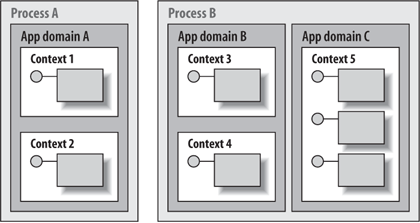.NET Component Services
.NET provides component services via call interception. To intercept a call, .NET must insert a proxy between the client and the object and do some pre- and post-call processing. Call interception is the key to valuable, productivity-oriented component services. For example, interception can provide thread safety by trying to acquire a lock before accessing the object and then proceeding to call the object. While the call is in progress, calls coming in from other clients are intercepted as well, and those calls will be blocked when they try to access the lock. When the call returns from the object to the proxy, it unlocks the lock to allow other clients to use the object. Another example of an interception-based component service is call authorization : the proxy can verify that the caller has appropriate credentials (such as being a member of a specified role) to call the object, and deny access if it does not. The problem with call interception is that an app domain is too coarse an execution scope; even though cross-app domain calls always go through a proxy, some app domain calls use direct references. To address this problem, app domains are further subdivided into contexts, and objects execute in contexts rather than app domains (see Figure 11-1).

Figure 11-1. App domains and contexts
In .NET, the context is the innermost execution scope of an object. ...
Get Programming .NET Components, 2nd Edition now with the O’Reilly learning platform.
O’Reilly members experience books, live events, courses curated by job role, and more from O’Reilly and nearly 200 top publishers.

